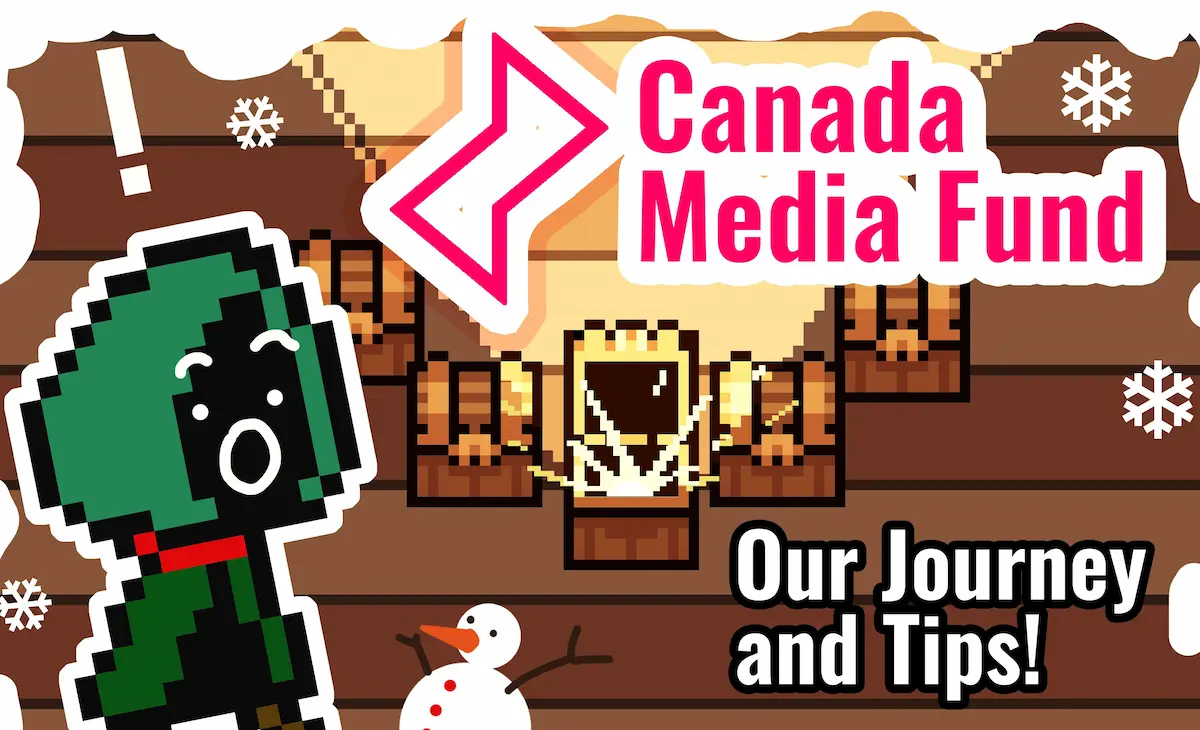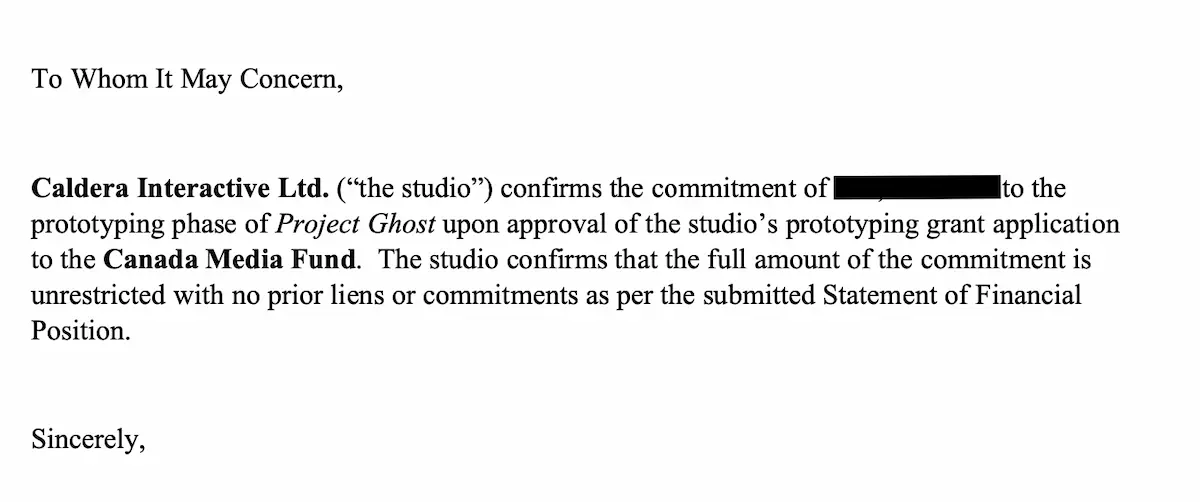Unlocking CMF Funding: Securing 250K For You Game

We decided to share some of the lessons we learned from our three applications to the CMF Prototyping Program!
What is CMF?
The Canada Media Fund (CMF) is a fund accessible to all Canadian audio-visual and digital media creators. Video game studios can apply to the experimental programs to get funding at three stages of a project: conceptualization, prototyping and production. You can learn more about these programs here. We will be discussing our experience in applying specifically to the CMF Experimental Prototyping program in this newsletter.
A Bit of Context
We incorporated Caldera Interactive in 2019, just in time for our first application to the CMF Prototyping program in October 2019. This first application was unsuccessful, scoring 73.5/100. Although not a solid benchmark, we were told that projects that score 80 or above are often funded. It is a competition, however, and 80 plus is by no means a guarantee. We reapplied in 2020 with a new project, which was also unsuccessful. We were very intentional in incorporating all the feedback we received from the previous application, but we still scored 71/100.
This was a difficult time for our team, but we persevered and reapplied with yet another new project in 2021. And as you know, the third time’s the charm. We received the email that we had been funded in mid-January 2022, scoring 80.5/100 on our application to Project Ghost. With three applications to our name, we have received a lot of feedback from different analysts, which led to our being successful. Here are a few lessons learned we wanted to share so that you can access funding faster.
Disclaimer
These lessons are obviously based on our experience, and you might have a different experience than we did. We are in no way affiliated with the CMF to share these tips, and we encourage everyone who is considering applying to talk to the CMF directly when in doubt. Also, we have found that feedback depends a lot on the analyst who reviews your application, and you might even receive conflicting feedback from application to application (it happened to us). Therefore, please use your best judgment when applying and take all that we say with a grain of salt.
1. Have a Dedicated Game Designer Role on Your Team
We made design decisions often as a group back then. We wanted to showcase that we valued everyone’s opinions and that we worked really well together. We even added the game designer title to all of our members to demonstrate this relationship in our third application. Our analysts gave the following comment about this:
All members presenting as also game designers is not helpful to the studio. Teams are more convincing when each member is specialized according to education/training and experience. We understand that all members can contribute, and a certain degree of versatility is always a plus. However, when working at high quality and output level, it is best to specialize.
Please note that this is not necessarily a deal breaker. This note is from our successful application with Project Ghost, and we still got the money. Since then, our art director Titus has stepped up as Creative Director and Lead Designer, and we won’t have this problem on our next application to the CMF.
2. Parity and Diversity Points Can Make All the Difference
Depending on whether you are already an established studio or not, this section might not be helpful to you. Regardless, studios can receive two points out of 100 if at least 50% of their leadership team are women or gender-diverse, and two other points if their team is also diverse. You can learn more about the CMF’s EDI objectives here. Therefore, you might get four easy points which can make all the difference in the end. In our case. we did not have and still don’t get parity points, but we did receive two diversity points on our last application.
Creative Director and Lead Designer, and we won’t have this problem on our next application to the CMF.
3. Do a Review Session with an Analyst
A few weeks before the submission deadline, you can book a review session of your application with an analyst. They will go through your application and point to any sections needing rework. Therefore, it’s very important that you start your application early so that you can benefit from this session. For our successful application, we met with an analyst that pointed out many issues with our budget and cash flow that would have made us ineligible for the grant. We can’t stress enough how important that review session can be.
4. Studios Without Released Products Are at a Big Disadvantage
The team section of the application was worth 16 points in 2021. It was worth 17 points in 2020 and 14 points in 2019. All that to say that it’s one of the most important sections, and you need to get all the points you can get. And, if your studio has not shipped a game together, there are only so many points you can actually receive because your studio cannot be evaluated properly. This is a comment from our successful application:
Until the studio publishes a first title, the studio evaluation remains limited in terms of scoring. Only team members obtain points.
Therefore, we scored 9/16 in 2021, 9/17 in 2020 and 8.5/14 in 2019 on this section. It is not impossible to receive funding for a new studio, but it is much more difficult. If we could go back in time, we would consider releasing a small project as a part-time studio in between CMF applications so that we could score higher in that section.
5. Make Sure To Add Signed Financial Commitment Letters
We are unsure if that makes a huge difference in your actual grading, but we received negative comments on our financial viability sections in our first two applications since we did not provide commitment letters for all of our contributions. It is a criteria requirement; however, it is easy to overlook and can also be intimidating because the guidelines do not explain what goes into these commitment letters. For example, if you use salary deferrals, cash contributions, or interim financing, you must provide signed letters with those financial contributions. See a screenshot of one of our commitment letters from our successful application. Make sure you add a date and appropriate signatures as well.

Conclusion
We hope that those five tips can help you access funding faster than we did. We also want to acknowledge all the help that we received from many mentors and studios that were also very open about their applications and their experience. Actually, if we had to choose, the thing we did that most helped us get the CMF is talking with our community of studios and devs and learning a ton from them. The more we demystify the CMF application process, the better it is for all indie studios. And it all begins with studios sharing knowledge and expertise like this.
We hope this can become a series about our CMF application experience, and we plan on sharing other tips like this in the future. In the meantime, if you have any questions, feel free to contact us, and we’ll be happy to help!
If you want to support our studio and encourage us to create more content like this, please subscribe to become a playtester for Project Ghost.